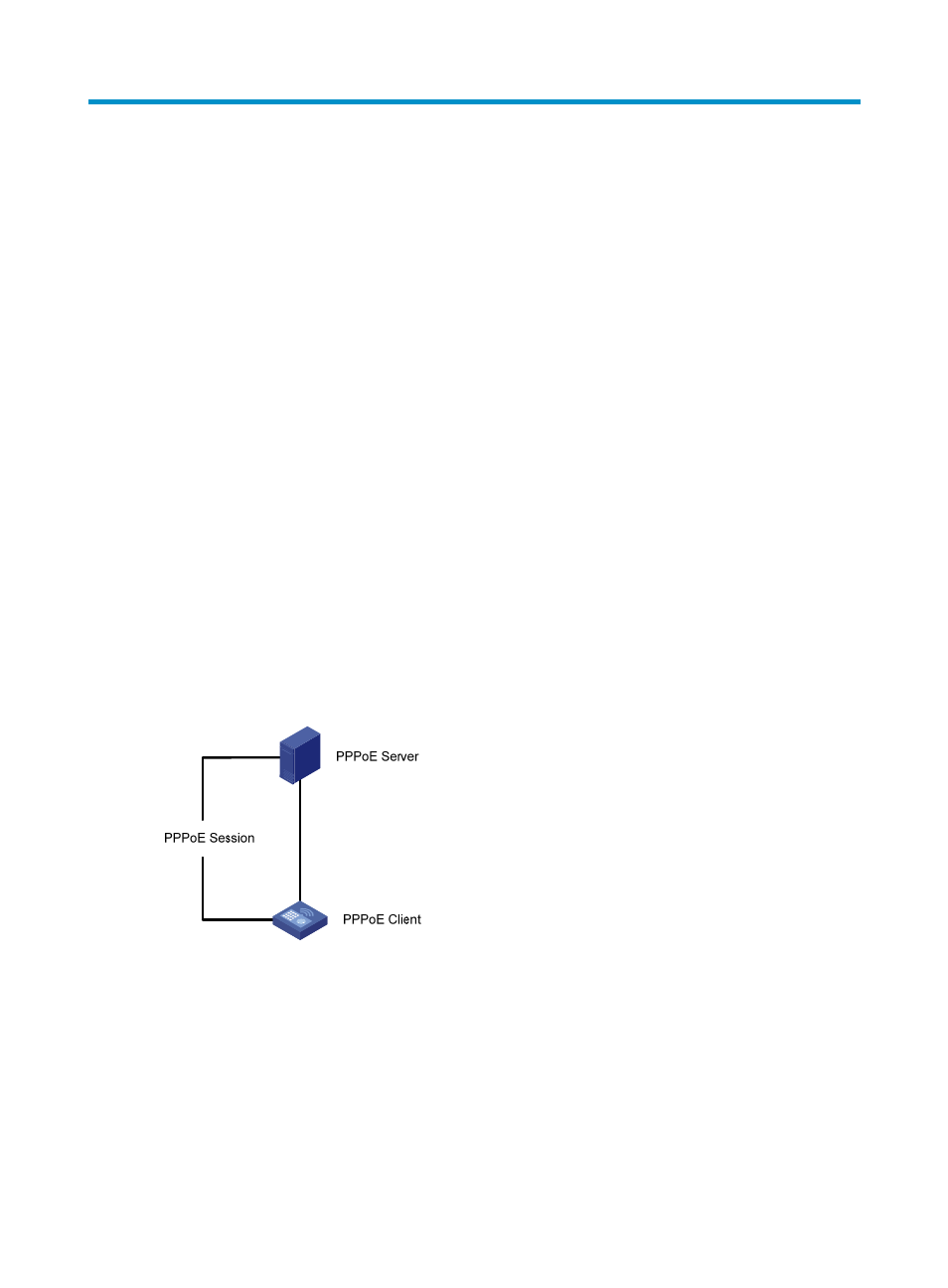Configuring pppoe, Overview, Configuration guidelines – H3C Technologies H3C WX3000E Series Wireless Switches User Manual
Page 267

246
Configuring PPPoE
Support for PPPoE depends on the device model. For more information, see "
Controllers Web-Based Configuration Guide
."
Overview
Point-to-Point Protocol over Ethernet (PPPoE) uses the client/server model. It establishes point-to-point links
over Ethernet, and encapsulates PPP packets in Ethernet frames.
APs configured as PPPoE clients can be connected to the Internet through a remote access device, and
access control and accounting can be implemented on a per-AP basis.
PPPoE undergoes two phases:
•
Discovery phase—Where a PPPoE session is initiated. In this phase, the client obtains the MAC
address of the access end and generates the PPPoE session ID.
•
PPP session phase—Where PPP packets are encapsulated in Ethernet frames before being sent to
the peer.
In the frame, the session ID must be the one determined in the discovery phase, the MAC address must
be that of the peer, and the PPP packet section begins from the Protocol ID field. In the session phase,
either end of the link can terminate the session by sending PPPoE Active Discovery Terminate (PADT)
packets.
For more information about PPPoE, see RFC 2516.
Figure 221 PPPoE application scenario
Configuration guidelines
The dialer interfaces that you create on the page by selecting Device > Interface Management can also
be displayed on the PPPoE client page. On this page, you can modify or remove these dialer interfaces
as well. However, you cannot establish PPPoE sessions for them.
- H3C WX5500E Series Access Controllers H3C WX3500E Series Access Controllers H3C WX2500E Series Access Controllers H3C WX6000 Series Access Controllers H3C WX5000 Series Access Controllers H3C LSUM3WCMD0 Access Controller Module H3C LSUM1WCME0 Access Controller Module H3C LSRM1WCM2A1 Access Controller Module
